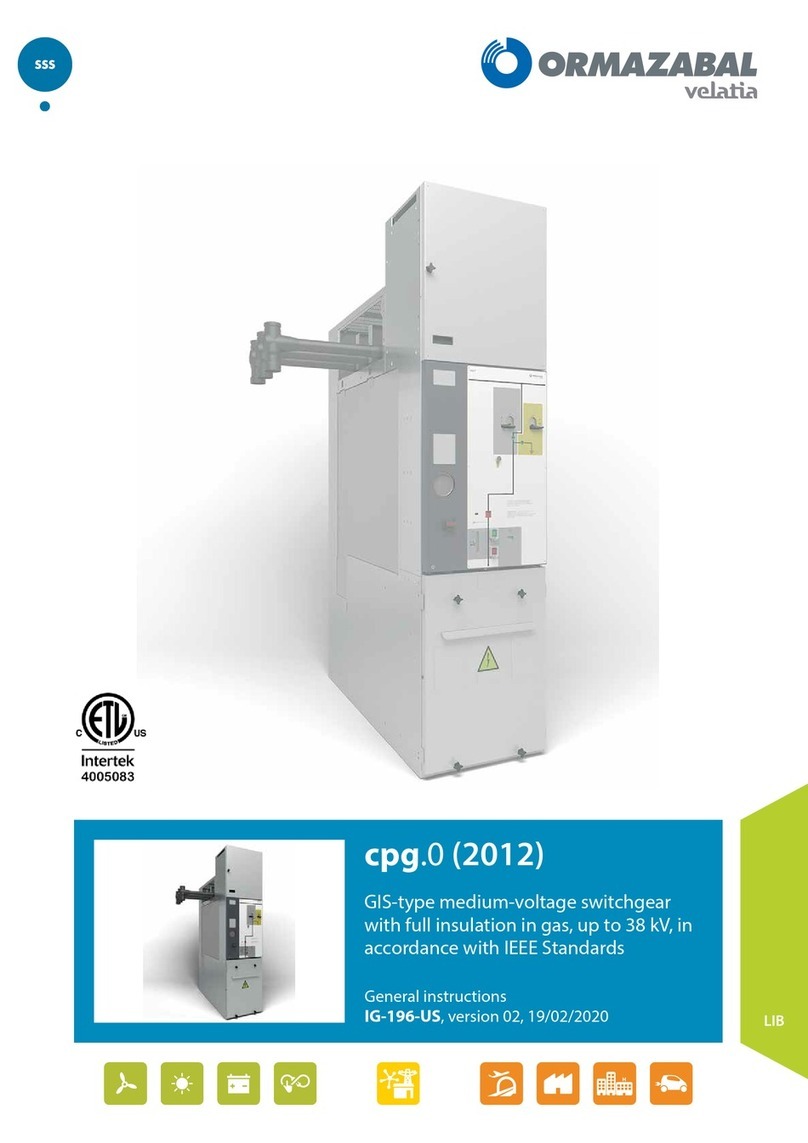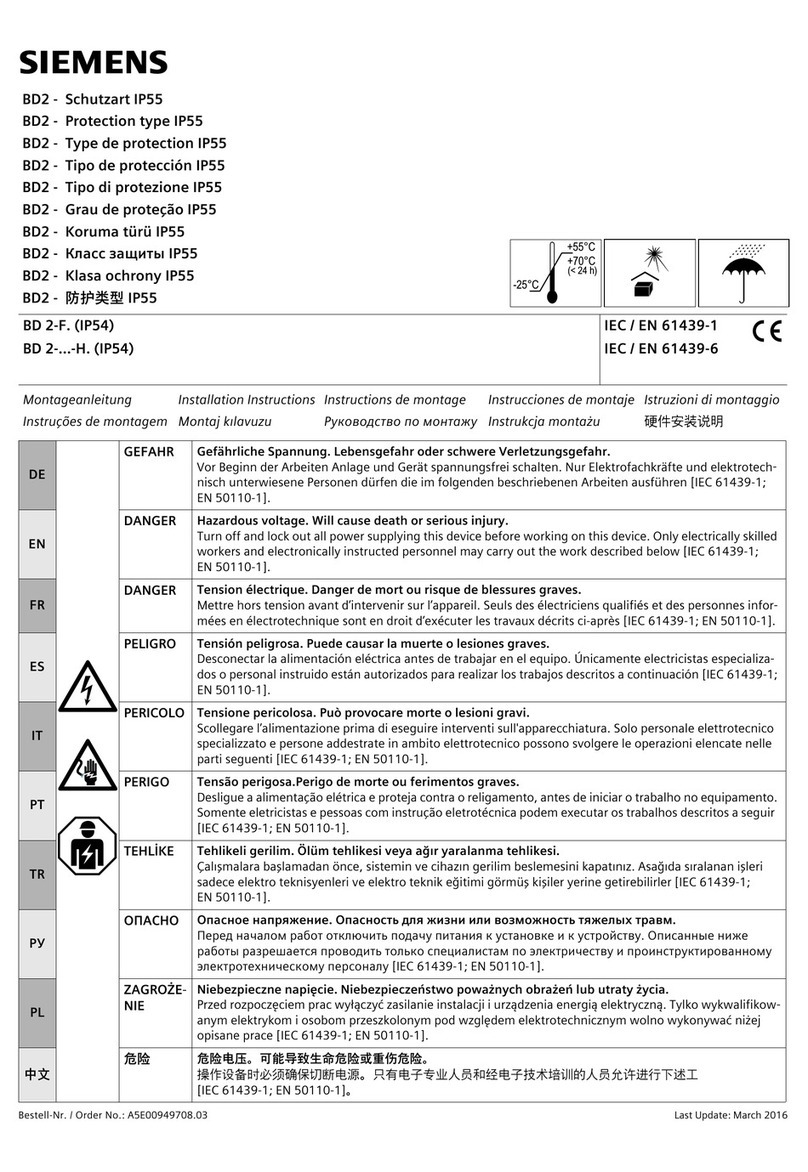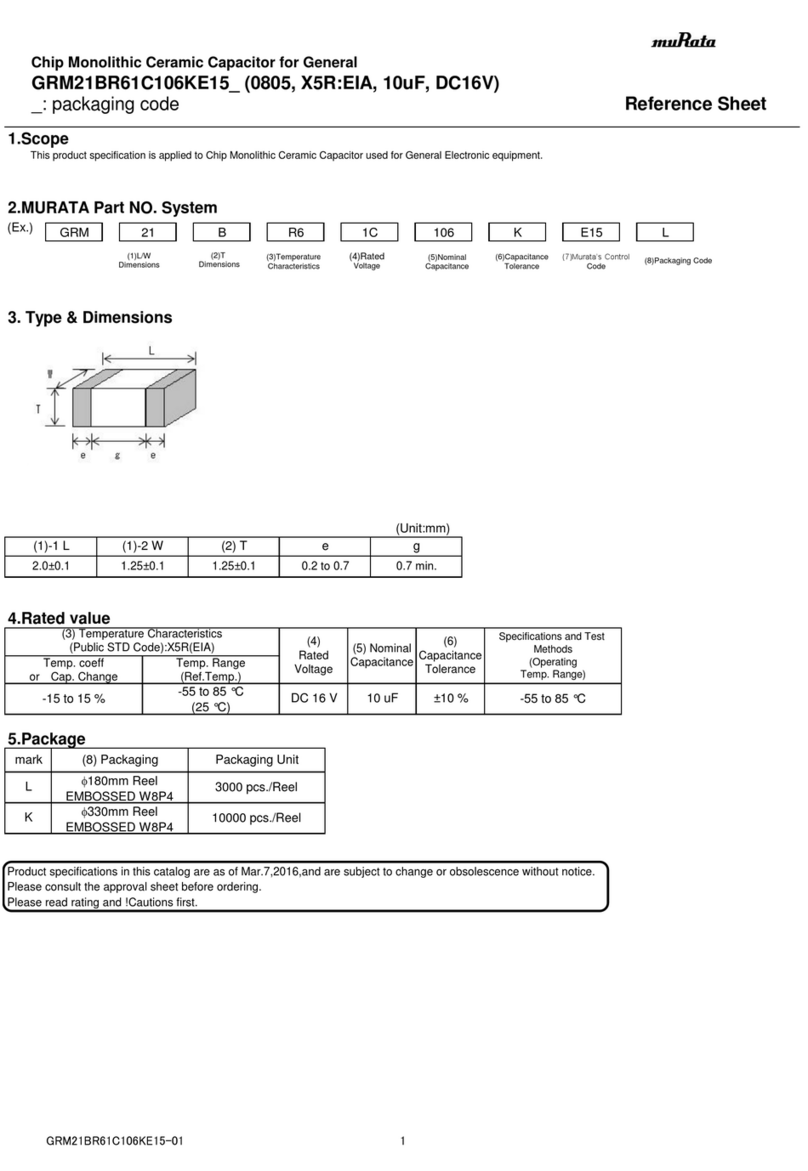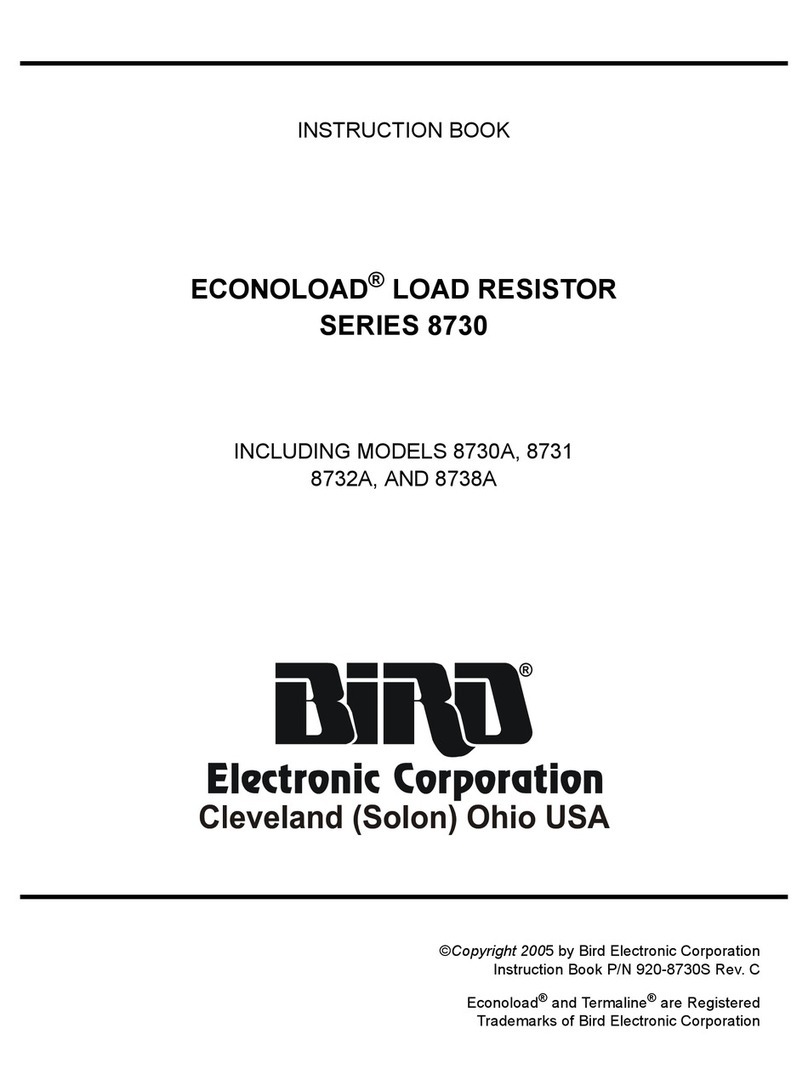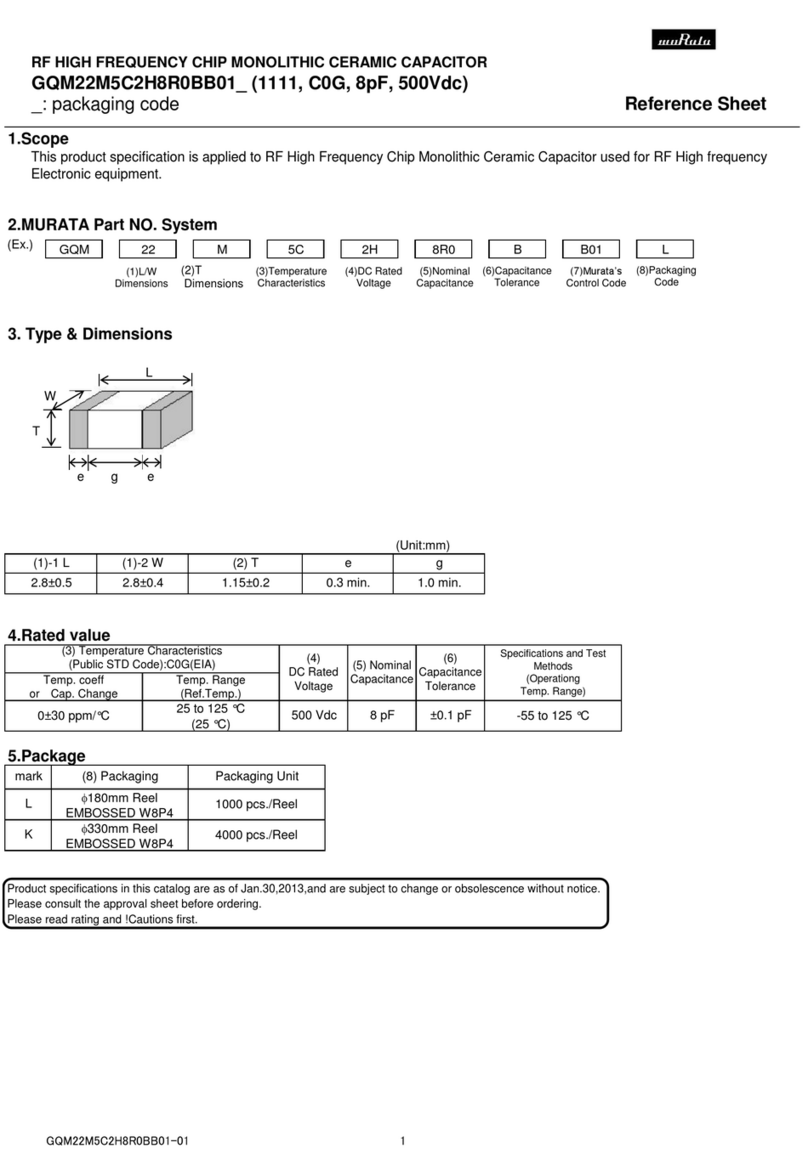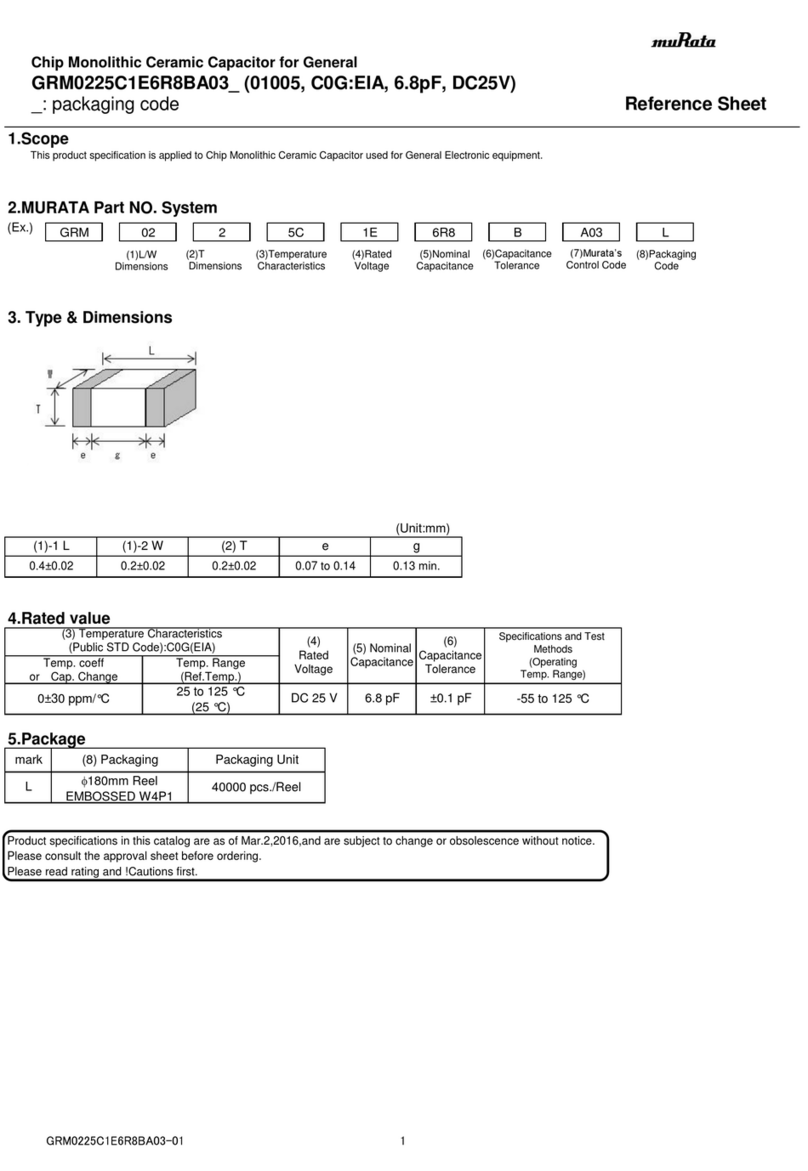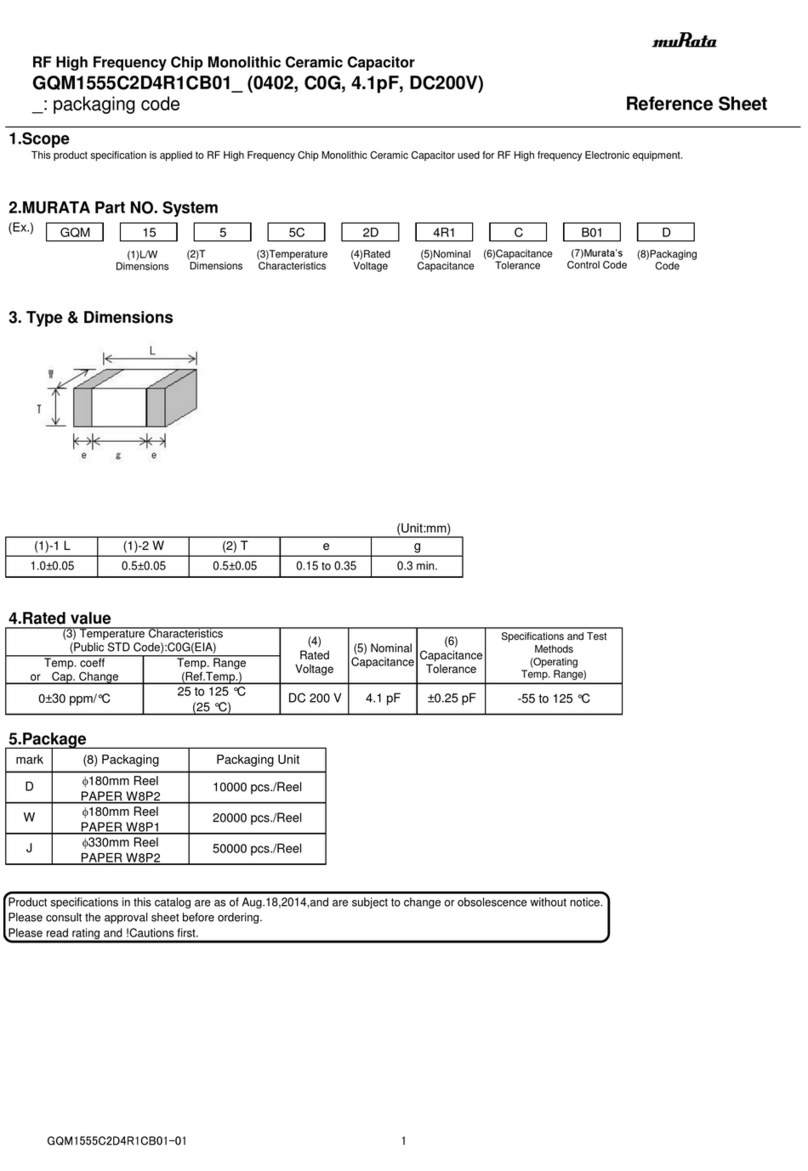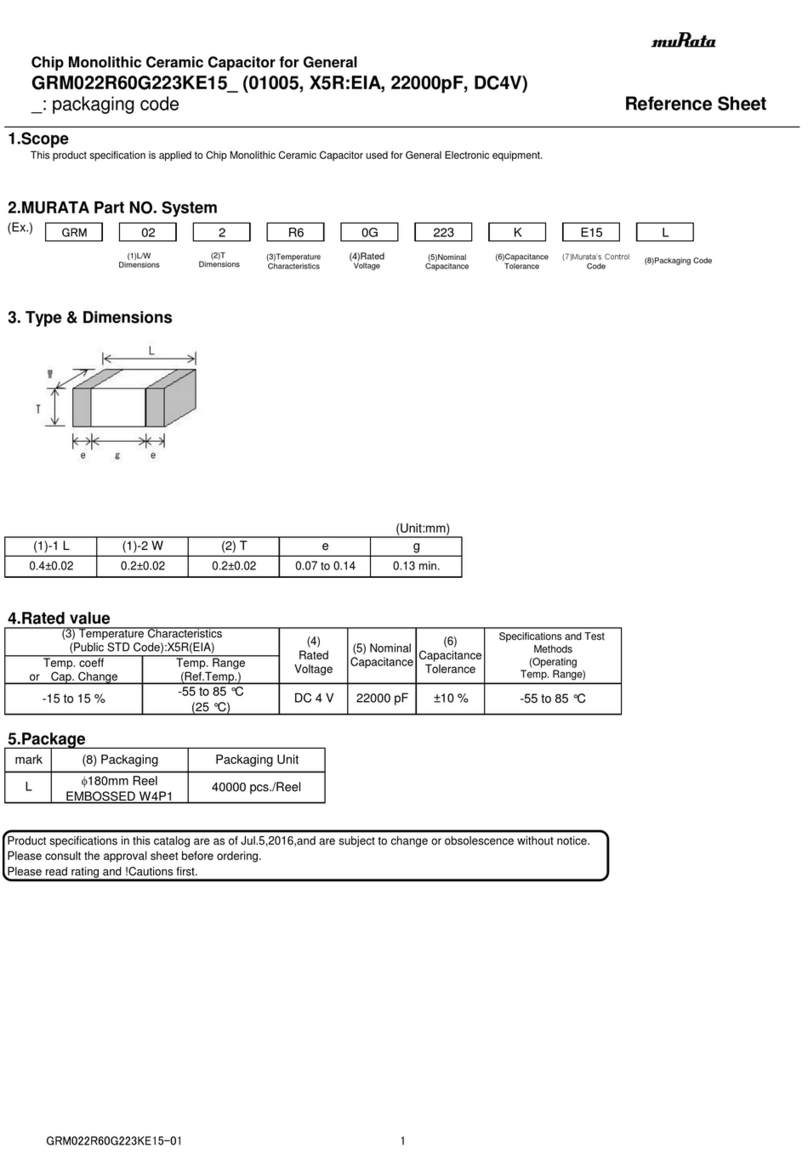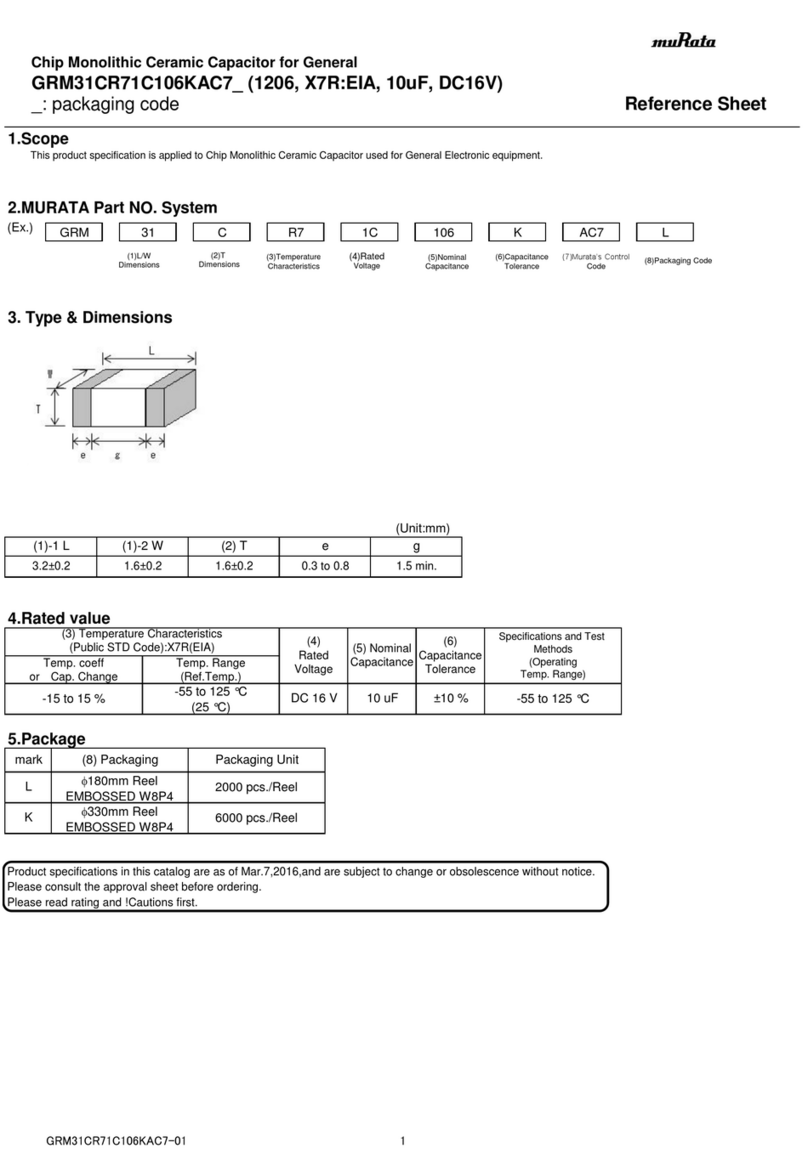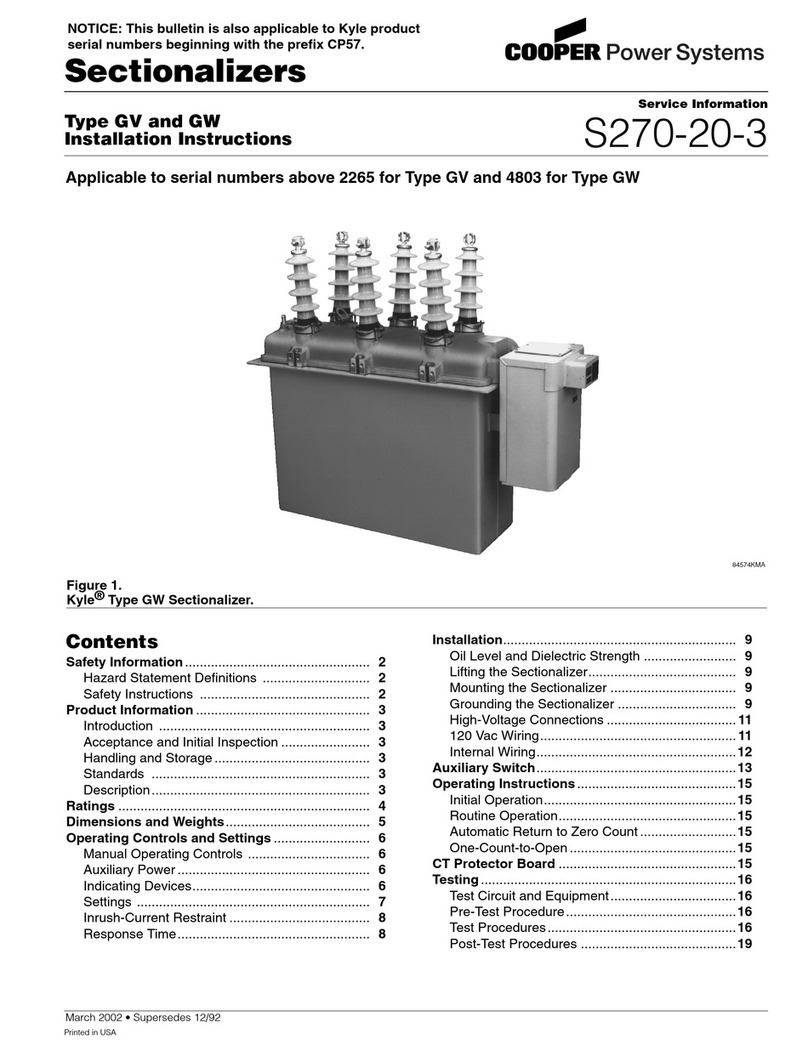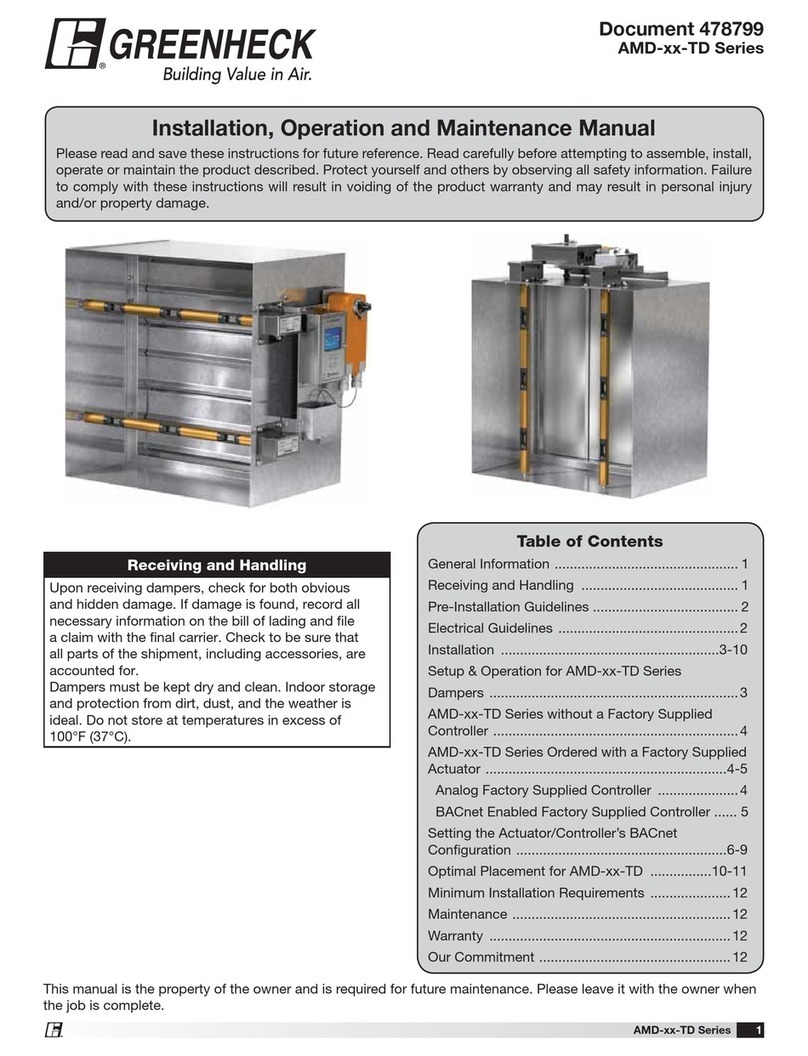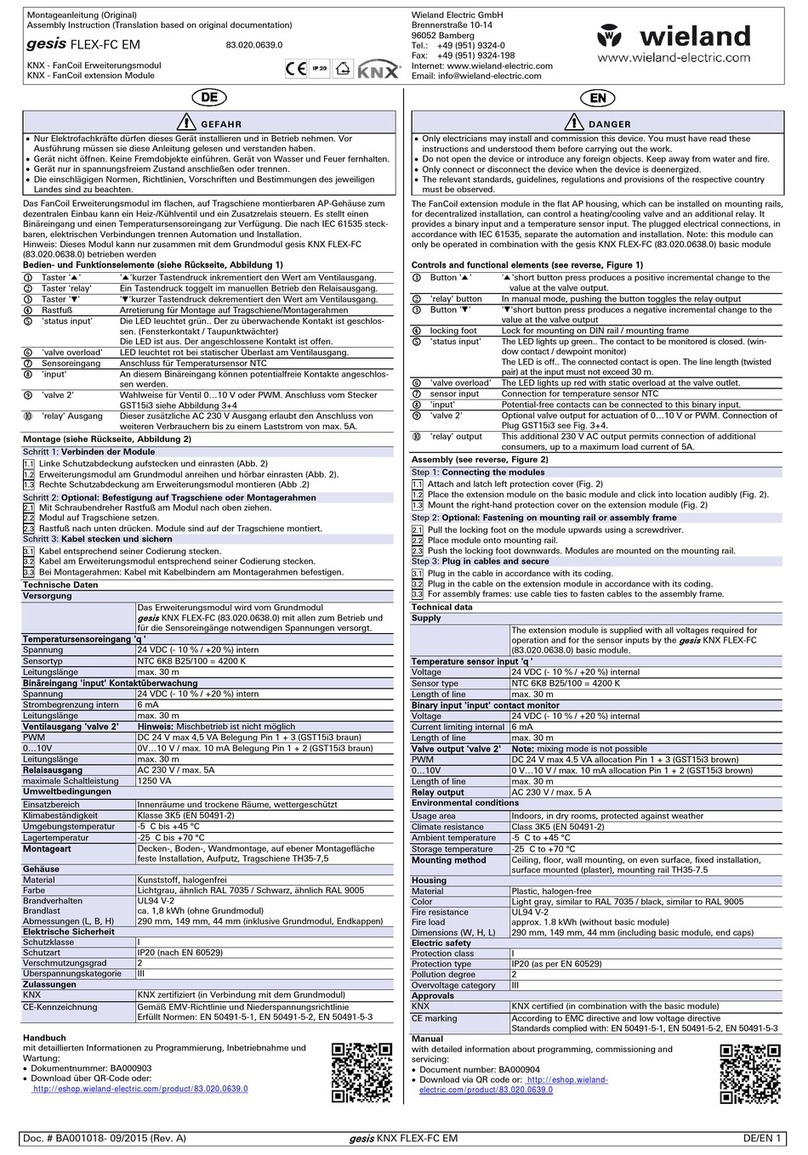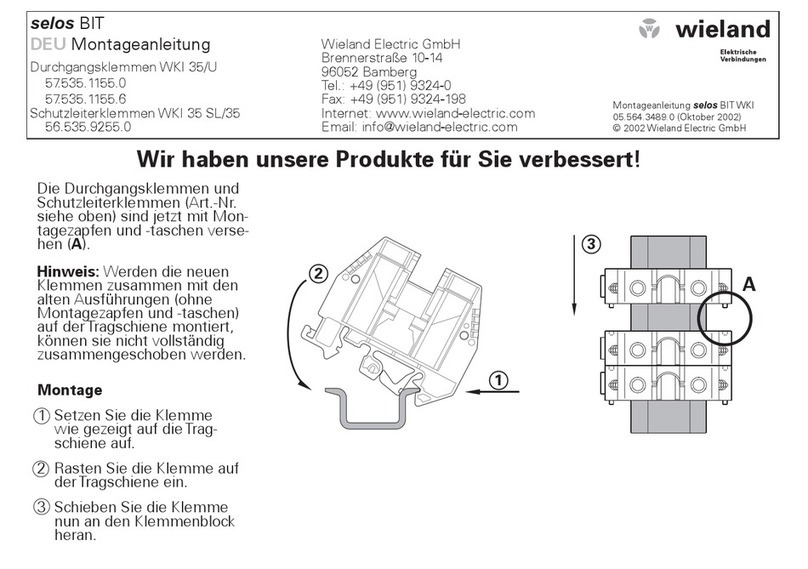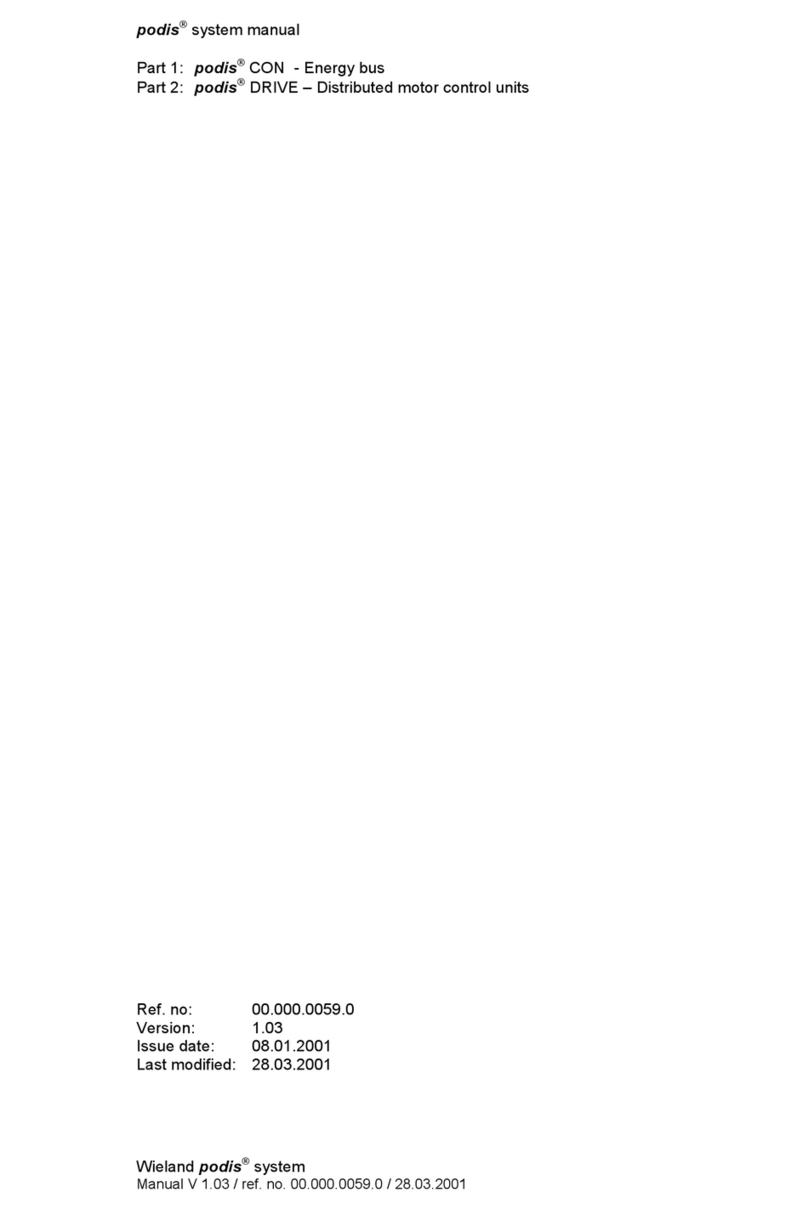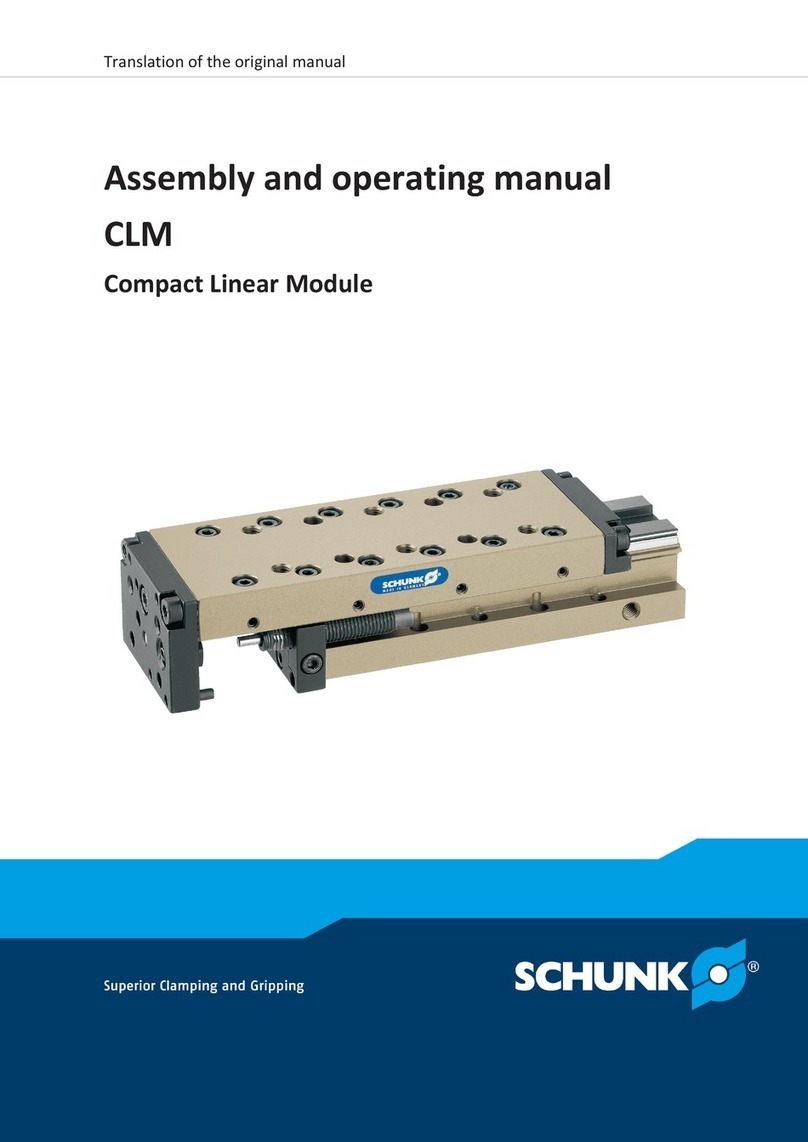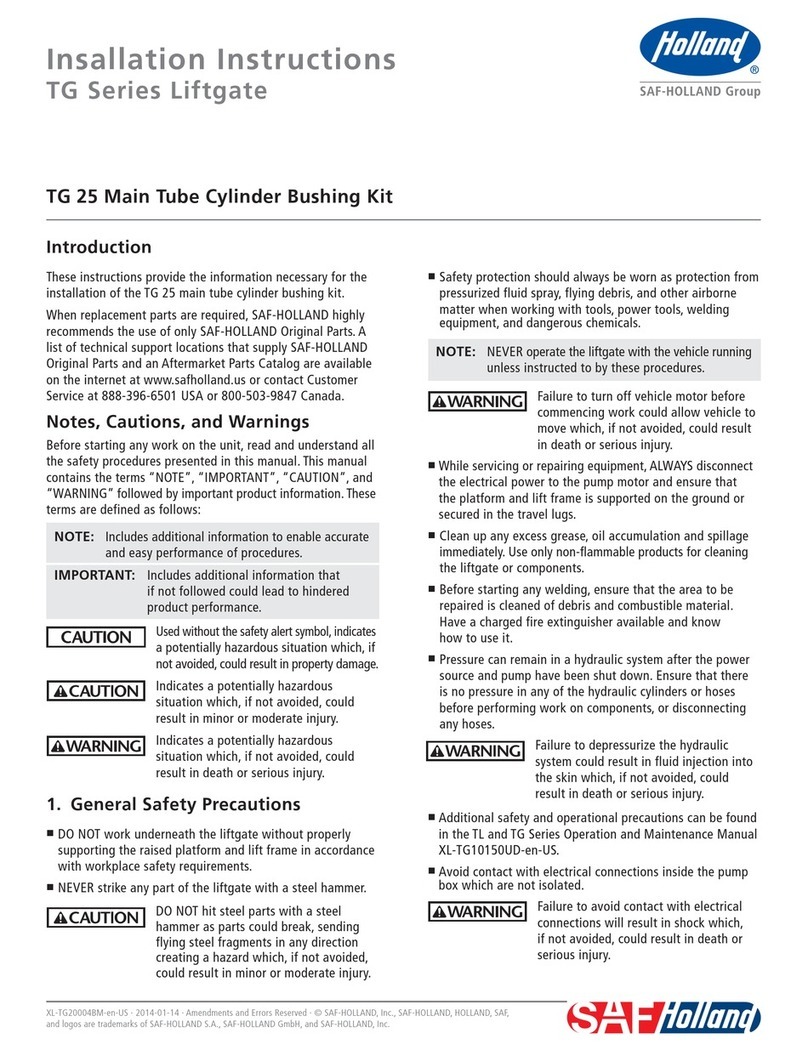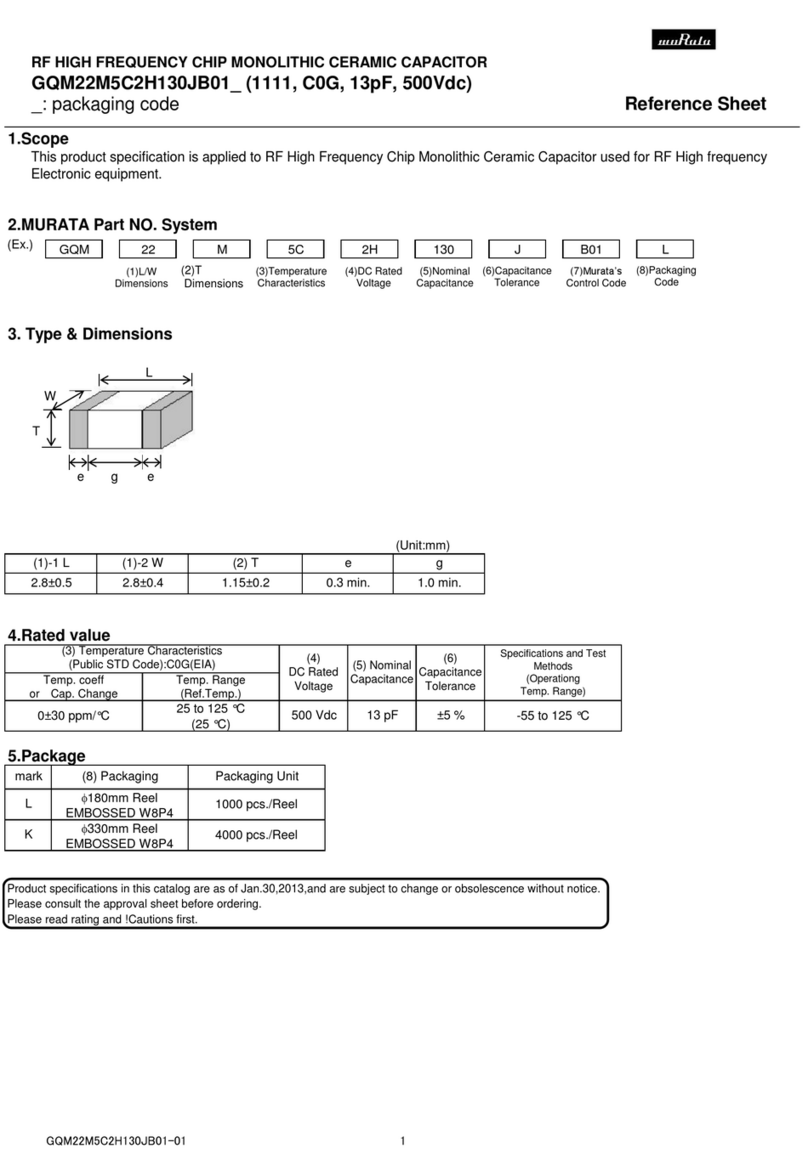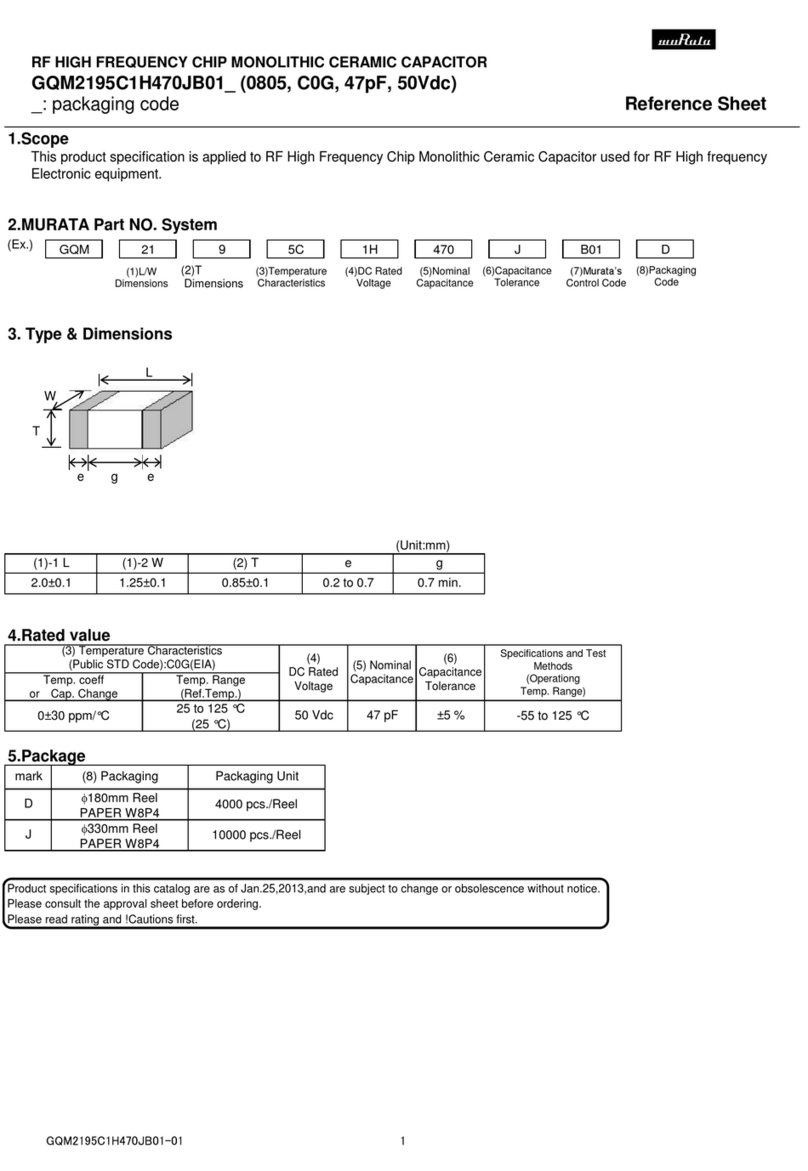
Montageanleitung (Original)
Installation Instructions (Translation based on Original Documentation)
gesis FLEX-REG4 (V/D/DV)
Systemgehäuse für Reiheneinbaugeräte (4 Teilungseinheiten)/
System housing for rail-mounted devices (4 split modules)
83.020.066x.0
Brennerstraße 10-14
96052 Bamberg
Tel.: +49 (951) 9324-0
Fax: +49 (951) 9324-198
Internet: www.wieland-electric.com
Email: info@wieland-electric.com
Doc. # BA000897 - 02/2014 (Rev. A) gesis FLEX-REG4 DE/EN 1
GEFAHR
•Nur Elektrofachkräfte dürfen dieses Gerät installieren und in Betrieb nehmen. Vor
Ausführung müssen sie diese Anleitung gelesen und verstanden haben.
•Gerät nur in spannungsfreiem Zustand öffnen, anschließen oder trennen.
•Die interne Klemme X1 (siehe Rückseite, Abbildung 1) darf nur für den Abgriff der Netz-
spannung genutzt werden. Das Einspeisen von Netzspannung über die Klemme X1 ist
nicht zulässig.
•Beim Einbau von Reiheneinbaugeräten haftet der Kunde selbst für den gefahrlosen Betrieb
und die Einhaltung der gesetzlichen Vorschriften.
•Die einschlägigen Normen, Richtlinien, Vorschriften und Bestimmungen des jeweiligen
Landes sind zu beachten.
Das REG-Modul ist systemkonform zum flachen, auf Tragschiene montierbaren Modulsystem
gesis FLEX. Es kann Reiheneinbaugeräte nach DIN 43880 mit 4 Teilungseinheiten (TE) auf-
nehmen. Vom vorgeschalteten Modul wird die Netz- und Busversorgung zum nächsten Modul
weitergeleitet. Das Netz kann intern über einen GST15 Anschluss abgegriffen werden.
Das Modul ist unbearbeitet (83.020.0600.0), mit Kabeleinführungen (83.020.0661.0,
83.020.0663) oder Klappdeckel erhältlich (83.020.0662, 83.020.0663).
Bestückung
Schritte siehe Rückseite
1. REG-Geräte auf Tragschiene im Gehäuseunterteil setzen. Abbildung 3
2. Modul mit Klappdeckel: Klappdeckel montieren. Abbildung 4
3. Bei Kabeleinführung: Kabel abisolieren, ablängen und durch die Kabe-
leinführung führen.
Abbildung 5
4. Verdrahtung der REG-Geräte vornehmen.
5. Gehäuseoberteil auf Gehäuseunterteil setzen und mit hörbarem Klick
einrasten.
Abbildung 6
Montage (siehe Rückseite, Abbildung 7)
Schritt 1: Module Stecken
1.1 Endkappe links auf das erste Modul setzen und einrasten.
1.2 Module in gewünschter Reihenfolge mit hörbarem Klick einrasten.
1.3 Endkappe auf letztes Modul rechts aufsetzen und einrasten.
Schritt 2: Optional: Befestigung auf Tragschiene oder Montagerahmen
2.1 An jedem Modul mit Schraubendreher den Rastfuß nach oben ziehen.
2.2 Module auf Tragschiene aufsetzen.
2.3 An jedem Modul mit Schraubendreher den Rastfuß nach unten drücken.
Die Module sind auf der Tragschiene befestigt.
Schritt 3: Kabel stecken und sichern
3.1 Kabel an allen weiteren Modulen stecken (Siehe: Montageanleitungen).
Wichtig: Festen Sitz aller Steckverbindungen und Verschraubungen sicherstellen.
3.2 Bei Montagerahmen: Leitungen mit Kabelbindern am Montagerahmen befestigen.
Demontage für Wartung/Reparatur (siehe Rückseite, Abbildung 2)
Schritte
1. Schraubendreher an Rasthaken einführen.
2. Rasthaken mit der Klinge zurückdrücken.
3. Rasthaken durch leichtes Ziehen am Gehäuseoberteil aus der Arretierung lösen.
4. Schritte 1 bis 3 für die restlichen 5 Rasthaken durchführen.
5. Gehäuseoberteil abnehmen.
Wichtig: Zur Entnahme der Platine Kabelverschraubungen lösen.
Technische Daten
Netzdurchführung
Bemessungsspannung
1-phasig oder 3-phasig
230 V / 400 VAC, -15 % / +10 %, 50/60 Hz (GST15i5)
Bemessungsstrom 16 A je Außenleiter
Empfohlene Absicherung 1-poliger oder 3-poliger Leitungsschutzschalter B16A
Umweltbedingungen
Einsatzbereich Innenräume und trockene Räume, wettergeschützt
Klimabeständigkeit Klasse 3K5 (EN 50491-2)
Umgebungstemperatur -5 °C bis +45 °C
Lagertemperatur -25 °C bis +75 °C
Montageart Decken-, Boden-, Wandmontage, feste Installation, Aufputz, auf
ebene Fläche, Tragschiene TH35, Montagerahmen
Gehäuse
Material Kunststoff, halogenfrei
Farbe Lichtgrau, ähnlich RAL 7035 / Schwarz, ähnlich RAL 9005
Brandverhalten
Brandlast
Abmessungen (B, H, L)
UL94 V-2
ca. 2 kWh
95 mm, 149 mm, 44 mm
Elektrische Sicherheit
Schutzklasse I
Schutzart IP20 (nach EN 60529)
Verschmutzungsgrad 2
Überspannungskategorie III
Handbuch
mit detaillierten Informationen zu Programmierung, Inbetriebnahme und
Wartung:
•Dokumentnummer: BA000903
•Download über QR-Code oder:
http://eshop.wieland-electric.com/product/83.020.0660.0
http://eshop.wieland-electric.com/product/83.020.0661.0
http://eshop.wieland-electric.com/product/83.020.0662.0
http://eshop.wieland-electric.com/product/83.020.0663.0
DANGER
•Only trained electricians may install and commission this device. They must have read and
understood this instruction manual before they carry out installation.
•Only open, connect or disconnect the device if it has been de-energised.
•The internal X1 terminal (see back page, Figure 1) may only be used for picking up the
mains supply. Feeding in the mains supply via the X1 terminal is not permitted.
•When installing rail-mounted devices, the customer assumes liability himself for safe
operation and observing the statutory regulations.
•The relevant standards, directives, regulations and provisions of the particular country are
to be observed.
The REG module is system-compliant with the flat gesis FLEX module system, which can be
mounted on the carrier rail. It can accept rail-mounted devices in accordance with DIN 43880
with 4 split modules. The mains and bus supply is transferred from the upstream module to
the next module. The mains can be picked up internally via a GST 15 connection.
The module is available as unmachined (83.020.0600.0), with cable entries (83.020.0661.0,
83.020.0663) or with a hinged cover (83.020.0662, 83.020.0663).
Mounting
Steps See back page
1. Place the REG devices on the carrier rail in the lower part of the housing Figure 3
2. Module with hinged cover: Fit the hinged cover. Figure 4
3. In the case of cable entry: Remove the insulation, cut to length and feed
through the cable entry.
Figure 5
4. Carry out the wiring of the REG devices.
5. Place the upper part of the housing on the lower part and latch it into
place with an audible click.
Figure 6
Installation (see back page, Figure 7)
Step 1: Plugging in modules
1.1 Place the end cap at the left onto the first module and latch it into place.
1.2 Latch the modules in the desired sequence into place with an audible click.
1.3 Place the end cap on the last module on the right and latch it into place.
Step 2: Optional: Fastening on carrier rail or mounting frame
2.1 Pull the resting foot on every module upwards with a screwdriver.
2.2 Place the modules on the carrier rail.
2.3 Press the resting foot on every module downwards with a screwdriver.
The modules are now fastened on the carrier rail.
Step 3: Plugging in cables and securing them
3.1 Plug the cables into all the other modules (See: Installation Instructions).
Important: Ensure that all plug-in connections and screw-connections are securely
seated.
3.2 In the case of a mounting frame: Fasten the cables to the mounting frame with cable ties.
Disassembly for maintenance/repair (see back page, Figure 2)
Steps
1. Insert a screwdriver into the resting clasp.
2. Press the resting clasp back with the blade.
3. Release the resting clasp from the lock mechanism by pulling lightly on the upper part of
the housing.
4. Perform steps 1 to 3 for the remaining 5 resting clasps.
5. Remove the upper part of the housing.
Important: Release the cable screw connections to remove the board.
Technical Data
Mains supply
Rated voltage
1-phase or 3-phase
230 V / 400 VAC, -15 % / +10 %, 50/60 Hz (GST15i5)
Rated current 16 A per outer cable
Recommended fuse
protection
1-pin or 3-pin circuit breaker B16A
Environmental conditions
Area of application Internal rooms and dry rooms, protected from weather
Climate resistance Class 3K5 (EN 50491-2)
Ambient temperature -5 °C to +45 °C
Storage temperature -25 °C to +75 °C
Type of installation Installation on ceiling, floor and wall, fixed installation, surface-
mounted, on level surface, carrier rail TH35, mounting frame
Housing
Material Plastic, halogen-free
Colour Light grey, similar to RAL 7035 / Black, similar to RAL 9005
Reaction to fire
Fire load
Dimensions (W, H, L)
UL94 V-2
approx. 2 kWh
95 mm, 149 mm, 44 mm
Electrical safety
Protection class I
Protection type IP20 (in accordance with EN 60529)
Contamination level 2
Over-voltage category III
Handbook
with detailed information on programming, commissioning and mainte-
nance:
•Document number: BA000904
•Download via QR code or:
http://eshop.wieland-electric.com/product/83.020.0660.0
http://eshop.wieland-electric.com/product/83.020.0661.0
http://eshop.wieland-electric.com/product/83.020.0662.0
http://eshop.wieland-electric.com/product/83.020.0663.0




